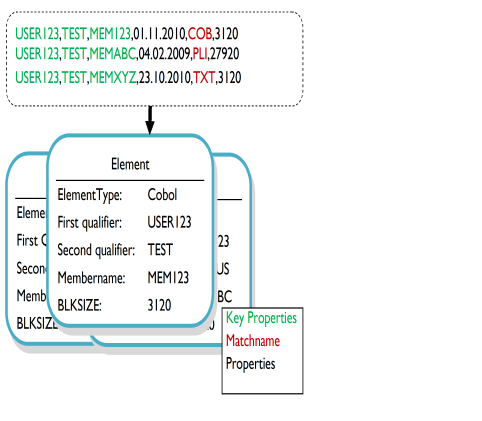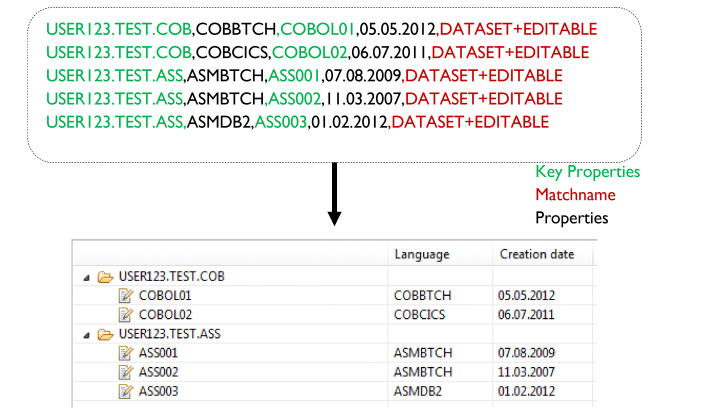Table Structure
An action which creates an element list in the Table Results view must have a "Create Element List" relationship with a reference to a structured file and to an element list structure that specifies which and how the properties of the file descriptor are presented in the Table Results view.
Additional string output parameters returned by the tool which create the element list are added as element list properties to that list.
As a minimum, the output file must contain all values of the key properties and the match name of the corresponding element type. See ID has Key Property and Element Type for more information. If the element list is to be represented in the form of a tree table, you must return the hierarchical tree structure in the match name by concatenating the match names of the element types which define the tree. You can use a + character to concatenate the match names. The output file must contain all values of all key properties of all element types which are referenced by one of the match names in the match name concatenation.
This means you cannot define an element type match name that contains the + character. If a tool returns a match name containing a + character in the element type property, the tool output will always be represented in the form of a tree table. Each segment of the concatenated match name separated by the + character is interpreted as an element type match name.
Additionally, output property values can be assigned to the corresponding element and be displayed in the table if these properties have also been assigned to the element type. Every line of the output file will be interpreted as a string of property values for an element.

Here is another example for a tool output which is represented in the form of a tree table:
